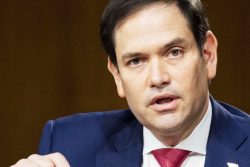Last month, the Guyana Water Incorporated (GWI) formally approached the Public Utilities Commission (PUC) seeking a rate increase, citing old and odd tariffs and the need for a means to subsidise maintenance/service costs. The response, which should have been expected, but clearly was not, was in the line of ‘show us the money’. To date, the PUC has never sanctioned a rate hike for any utility without thoroughly looking over all of the figures and taking all the necessary facts into consideration.
The GWI must have imagined otherwise, since its principals showed up at the PUC hearing devoid of its accounts. In fact, audited accounts for the last two years were said to be not available, but the PUC said it would look over the unaudited ones anyhow. One hopes that the public hearing for the tariff increase will be privy to the PUC’s summation of these accounts as they will reveal whether there is prudence in GWI spending or if its revenue, including the annual government subvention has been going down the drain like so much wasted water.
At a press conference last week, GWI’s Managing Director Dr Richard Van West-Charles noted that attempts to raise water pressure in Georgetown have resulted in “blowouts” of pipelines given that the distribution system is very old. This was in relation to there not being enough water to fight fires. While the issue with this stretches much further back than the beginning of Dr Van West-Charles’s tenure at GWI, it is disgraceful nonetheless that the antiquity of the water system is still an excuse that is viable in 2018. Shockingly disgraceful, when one considers that over the years, successive governments have accessed loans from international institutions for the water and sanitation sector.
For example, according to the Inter-American Development Bank (IDB) website, in 2014, Guyana received a loan for US$16.8 million for a programme aimed at boosting “efficiency, quality and sustainability of drinking water and sanitation infrastructure in Georgetown and other coastal areas.” This was bolstered by support from the Caribbean Investment Facility of the European Commission (EC) to the tune of US$14.8 million bringing the total for that project to some US$31.6 million.
However, up to the end of 2016, only 5.9% and 7.1% respectively of the two amounts had been disbursed. Not specifying the water sector, which the IDB has been involved with here for decades, but speaking of the Guyana situation in general, the website stated, “The primary reason for the decline in disbursements was the bank’s increased scrutiny of procurement in investment loans and grants, which was considered urgent to mitigate integrity risks.”
Notwithstanding this, during the press conference last week, GWI’s Executive Director of Project Implementation and Partnership Building Ramchand Jailall said that fixing the priority areas of the city’s aged water distribution system could cost over US$40 million. Mr Jailall referred to the IDB/EC programme stating that GWI was seeking to have additional work from the Shelter Belt to Cemetery Road and then to Central Ruimveldt undertaken through that facility. He was quoted as saying: “…It has been tendered and is being reviewed.”
Meanwhile, the Ministry of Communities, under which the GWI falls, said on its website that in 2016, “the government expended approximately $2 billion… to improve and expand access to water.” This was posted on December 17, 2016, under the heading, ‘Water sector saw key achievements in 2016’. Then on January 13, 2017, it stated that GWI had invested “in excess of $3 billion… to improve the livelihood of residents in all the administrative regions through infrastructural improvements for the provision of safe water.” This was posted under the heading, ‘$3B invested by GWI for improved water supply; Brazilian army to dig 9 wells in South Rupununi’. Perhaps the difference in the dollar amounts stems from the fact that the GWI’s accounts have not yet been audited.
The PUC’s scrutiny of the GWI’s accounts, its tariff increases proposal and its justification for seeking an increase should be no less stringent than the IDB’s, after all, tariffs, once paid cannot be reclaimed by customers, while loans have to be repaid. And at the end of the day, increased water rates will only target those who are already compliant; they do not address what is termed in the sector as non-revenue water. As the PUC is no doubt aware, just as in the electricity sector, there are water ‘consumers’ who access the service for free. GWI, like the Guyana Power and Light, has not been very successful in permanently divesting its network of these parasites for several reasons, which include corruption.
In addition, there are assumptions in the GWI proposal. With regard to non-domestic tariff increases it lumps non-metered consumers into paying fixed sums based on the size of the building within which they operate. At a very basic level, it projects that a small building means less water is used, when in fact the opposite could very well be the truth. There is a suggestion too that all non-pensionable consumers can afford a fixed charge, basing this on it being a “staple” of utility tariffs around the world. Maybe they can, but can the GWI really compare itself to utilities around the world? One does not mean to imply that nothing has been done since the old system was laid down, but the service, particularly in the city, leaves a lot to be desired. Apart from the need, the tanks and pumps, burst pipes and broken mains take too long to be fixed. The GWI is still not walking the talk.









